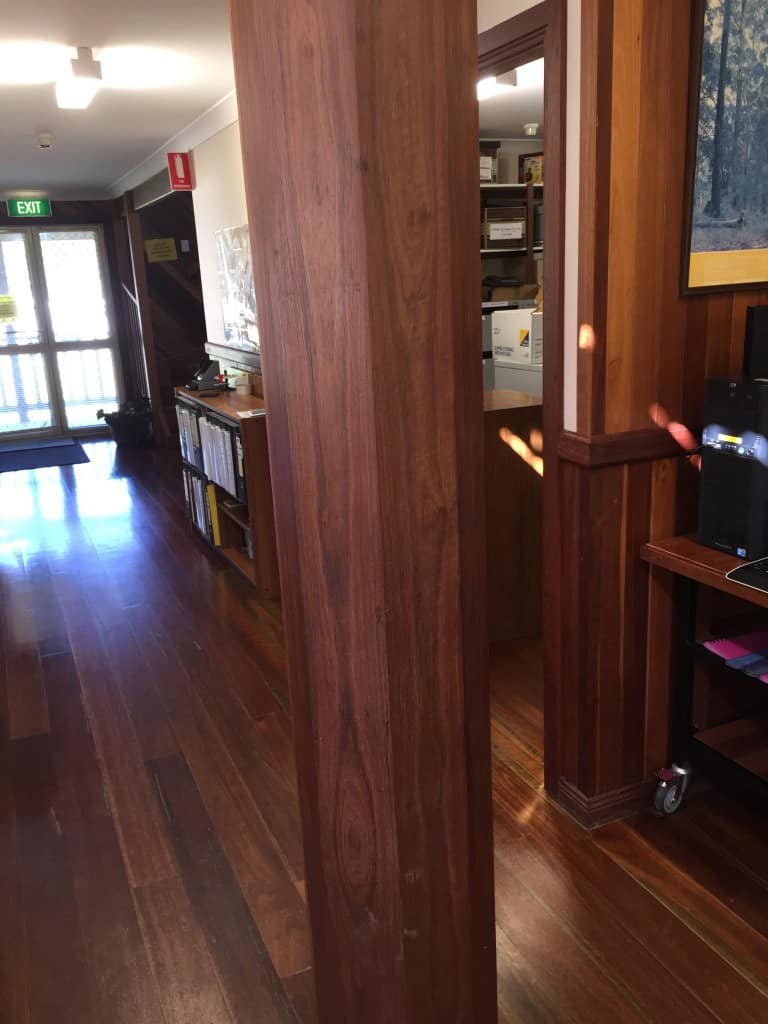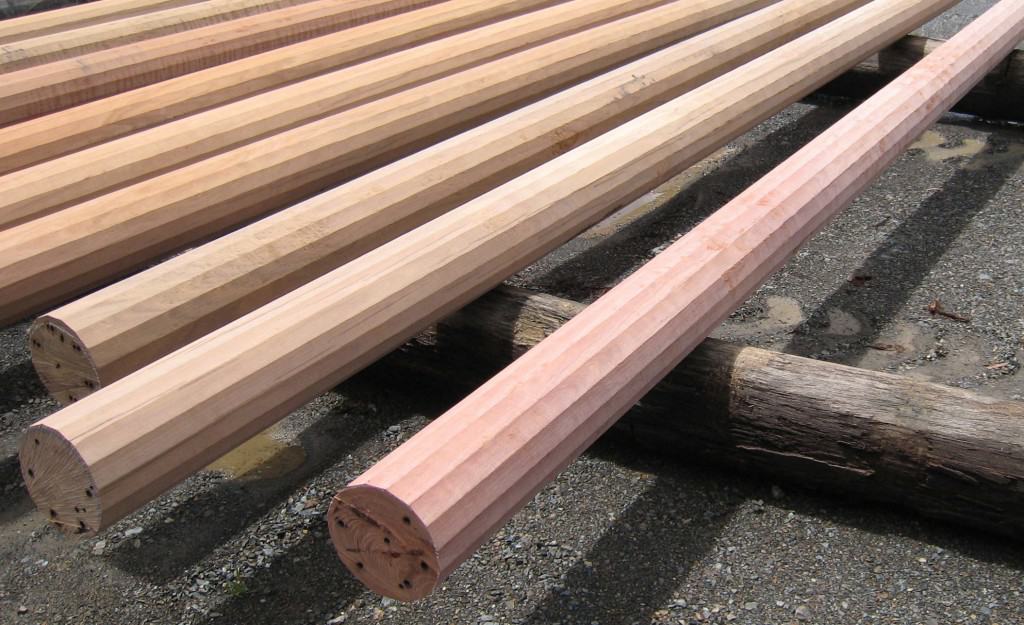Poles and piles
Ted Riddle looks at an old-fashioned method of construction and explains how poles and piles could make a resurgence in modern buildings.
Recently, a colleague of mine at Building Designers Australia asked me about the use of hardwood poles in a residential project. Her client wanted to go down the path of a ‘pole frame’ house but didn’t like the idea of CCA treated pine and wondered whether hardwood was still an option given the obvious reduction in logging over the last few decades.
Pole frame construction was very popular in the 1970-90s, but not something you observe too often these days. In saying that, a quick search of the internet shows there are still a number of specialist builders and kit home suppliers that provide the necessary know-how to make them viable.
I realise that CCA treated pine poles would certainly be the main timber resource with a number of suppliers ready and able to supply poles. But the look and feel of hardwood poles could certainly make a difference and – although there are many hardwood poles that are also CCA treated – de-sapped, dressed or faceted hardwood poles are also available.
To follow up on what is available in hardwood, I spoke to Coffs Harbour Hardwoods, from the north coast of New South Wales, and while they tell me the demand for hardwood building poles is very low, availability is not a problem.
They do a wide range of species with Durability Class 2 species such as spotted gum and blackbutt predominately sold CCA treated, while Class 1 species like the ironbarks, grey gum, grey box, some tallowwood and white mahogany are readily available as dressed (de-sapped) or faceted with either 8 or 16 sides available. These ‘Royal Species’ are certainly not as readily available as they once were and it would be difficult to supply a large quantity of any one particular species but by specifying reds or whites you would get poles that are very similar in colour.
Poles are still widely used for electricity transmission (as telegraph poles) and although many new developments use concrete poles there is still a high demand for new areas depending on the resources available to the suppling authority and for replacements.
The reason for the high number of treated hardwood poles is without a doubt the reafforestation programs of the last 50 years with species such as spotted gum and blackbutt favoured because of the high yield and ease of propagation; this in itself is a good result as these two species both possess high strength and durability coupled with aesthetically appealing timber when processed into value added products such as flooring, weatherboards, panelling and decking. Some also go into various furniture applications through veneers and small end section solids.
Both grow well within the areas available for forestry management, with a high range of appearance and structural uses, but being Durability Class 2, as poles they need the added protection of treatment. The treatment doesn’t affect the durability rating of the heartwood (often referred to as the ‘truewood’) but treats the outer layer of timber, the sapwood, which is not naturally durable, and therefore also provides extra protection for the pole from insect attack, such as termites. Even Class 1 poles need treatment if the sapwood is left on.
Coffs Harbour Hardwoods indicated that most of the poles they treat are CCA, meet Hazard Level 5 and don’t fall under the restrictions of use recommended by the Australian Pesticides and Veterinary Medicines Authority (APVMA). If a client is concerned about using CCA, they can supply them treated with Alkaline Copper Quaternary (ACQ) which is the treatment used in products such as decking, handrails and external furniture and is approved for human contact.
Most poles are usually treated because the main source of tree stems is immature, generally younger, straighter trees which are selected specifically for use as poles and not saw logs. The younger the tree, the more sapwood (as a rule) is contained on the outer layer of the stem, therefore making it less durable. The sapwood of any tree is not durable and so if left on, the pole needs to be treated.
Of course, all softwood poles need to be treated as they are predominantly sapwood and the heartwood is of a low durability in comparison to the hardwood species generally used. Koppers would, I believe, be the biggest supplier of poles, both softwood and hardwood, and in their specifications offer a ‘perfect round, non-tapered’ softwood pole. These are usually easier to work with as you don’t have to factor in the taper but they do lose strength in comparison to a similar tapered pole.
To check supply in the Sydney/Central Coast areas of NSW, one of the local treated specialist suppliers, Midcoast Timber, advised me that they distribute from two different softwood pole suppliers, Koppers and Australian United Timbers, as well the hardwood poles from Coffs Harbour, and can provide either the natural tapered poles or the dressed ‘perfect rounds’ in softwood.

Softwood poles are much lighter than their hardwood equivalent and probably easier to work for notching and fixing but again, are nowhere near as strong as a similar hardwood pole, which could be a factor from an engineering position when considering the number of poles needed, placement of poles for structural situations, size (i.e. diameter of poles) and the overall cost. These are all things that need to be considered when looking at a pole frame house.
Tree stems generally taper about 8mm in every metre of length so if you were using a 20m pole, the diameter at the top (the toe) would be approximately 160mm smaller than the bottom (the butt). Having a pole processed to perfect round reduces the strength of the pole in comparison to a pole which has a ‘toe’ size equivalent to that of the perfect round.
There are two ways of using natural round stems: either as building poles or piles. The basic difference between the two is that poles are stood on the butt in the ground or on a base with some form of mechanical fastening and piles are driven into the ground, toe end first, using the natural taper to facilitate the driving, not dissimilar to a nail or a screw. Piles are a very old method of building, having been used for thousands of years, with many old structures found to rely on timber piles as their structural footings.
These days, piles are more commonly used in marine applications for wharves, bridges and jetties. They are very good in soft soil conditions and can be used in reactive soils, mine subsidence areas and unstable ground where they can be driven to solid ground levels and then used to provide either a solid footing system or a platform base.
Like a bridge pile, if you have a building area that has to deal with natural water or a slope and you can get some form of pile driver onto the block, a pile base would be the ideal building foundation.
This sets up one of the two pole frame building methods: setting the poles (or piles) on a grid to form a platform and then building with a conventional timber frame construction; or use long poles and build them into the structural components of the house (in this case perfect rounds might be easier for the builder but could cause more limitations for the engineer).
Pole frames are certainly a very old method of building and you can see simple pole structures used in country areas for sheds and out buildings. There was a big fashion resurgence at the end of the 20th century in pole frame homes and it can provide a certain rustic charm for someone looking for something unique. If you do want to use hardwood or softwood, untreated or treated, perfect or naturally round, normal dressed or faceted there is a great range available so do some research with your local suppliers and see what all the fuss is about.
